You have either heard of a bulkhead and have no idea how the components of a ship’s hull are related to a house, or you have a boxy bulkhead in your kitchen, but you have no idea what its purpose is. I always thought it was a pure design feature to bring dimension to a ceiling.
As it turns out, there are two definitions of a bulkhead when you are talking about a house. Let’s explore the purpose of the more well-known ceiling box bulkhead and expand our knowledge base with the alternative home feature also known as a bulkhead.

A bulkhead is a box-like housing installed onto a ceiling to provide extra space for wiring, piping, and ductwork. They are common in kitchens, bathrooms, and basements. They can run around the perimeter of the room or form a central box. Bulkheads can also refer to external basement or cellar doors.
Defining a Bulkhead
A bulkhead is like an interior soffit that is created for pipes, electrical conduit, ductwork, etc., which cannot be placed within the ceiling joists. Imagine the bulkhead to be a space created on the ceiling or wall for things that you would not want to be seen normally. For example a water pipe. They are similar to drop ceilings in this regard, but they less extensive.
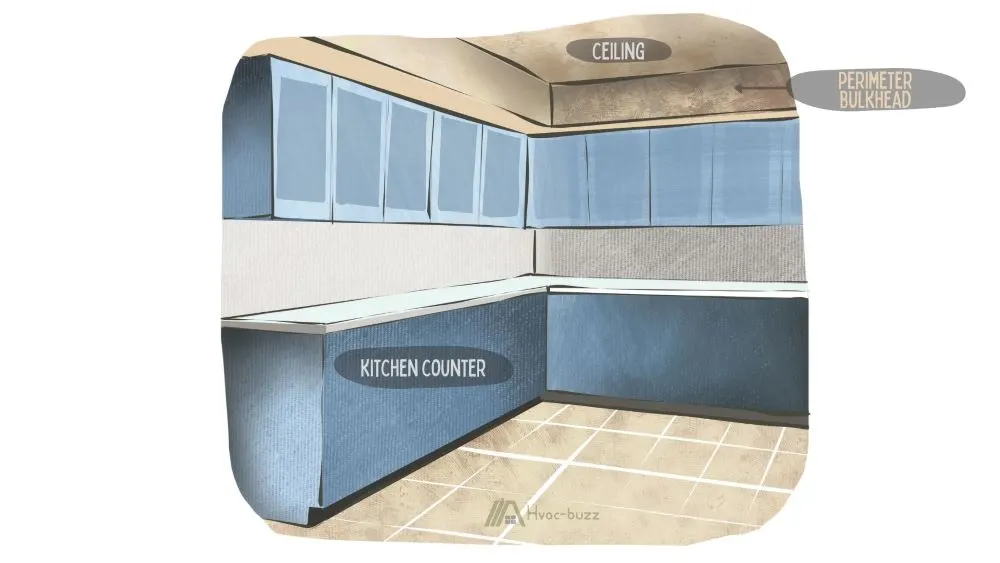
You can place a bulkhead anywhere in your house, but it is usually found in the kitchen, basement, and bathroom. A bulkhead is mostly seen around the edges, but you can create one in the center of the ceiling or around the edges of any enclosure.
When it comes to making a bulkhead, you can opt for plaster, drywall, or even stainless steel. You can create your bulkhead with treated wood, but there will always be the risk of water damage and rotting.
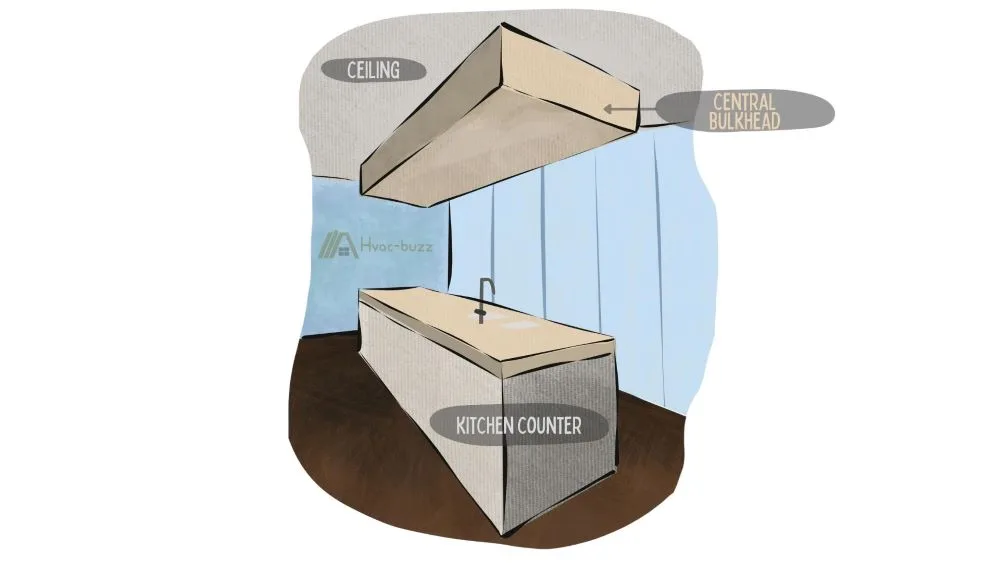
What Is the Purpose of a Bulkhead?
Imagine your friends drop by and the first thing they see in your living room is a hideous electric wire running across your ceiling, ruining your decor. Now if you had a bulkhead, then this wire would not be visible and the bulkhead would have accentuated your interior. Your friends, like me, might just assume it is a design feature with no real purpose.
A bulkhead might seem like an unnecessary structure that descends from your ceiling, but in reality, it has functional benefits and can amplify the aesthetic appeal of your space.
Concealing Pipes, Wires, and Ducts
The main function of a bulkhead is to allow amenities like plumbing, ducts, wiring, etc., to be added to a space without ruining the overall look. A bulkhead is also an effective way to avoid drilling holes on your walls and get watertight penetration for installing services.
When you drill holes on your walls or ceiling, you need to seal it carefully so that water does not seep in. With a bulkhead, you are sure that no moisture will get in.
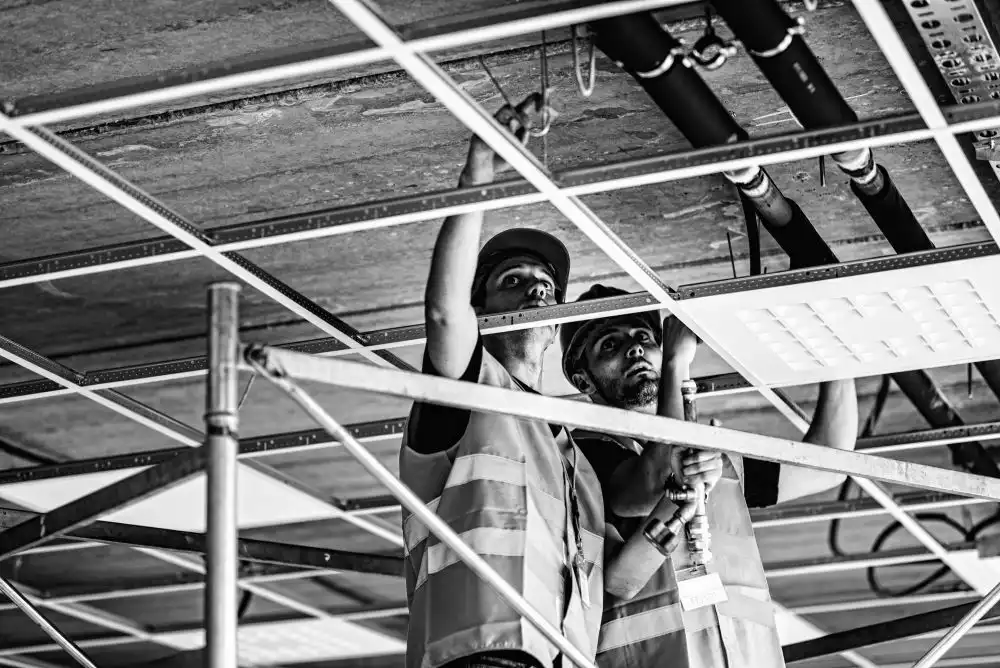
Bulkheads are a great way to ensure that air reaches every corner of a room. If you have a spacious, open-plan room, you can install vents on the bulkhead and ensure better air circulation in the room. This becomes easier especially if your bulkhead is placed bang in the middle of the room.
Adding to Aesthetics
A bulkhead is more than just a boxy structure hanging from your roof. With the right decor, it can add a stylish flair to the overall look and feel of your space. You can transform your bulkhead into a unique ornamental piece that makes your room stand out.
You can go for bulkhead lighting to lend a modern and charming vibe to your home. You can also combine different materials or tiling with lights and get really creative with the bulkhead. A bulkhead is a perfect way to add a new dimension to your house.
Drawbacks of Bulkheads
The most obvious disadvantage of a bulkhead is that it reduces the height of the room. As it drops from the actual ceiling, the height between the floor and the roof is reduced.
In some houses, a bulkhead might make the room look smaller than its actual size. In some houses, it may not be allowable at all as there is a minimum height requirement for habitable rooms.
A bulkhead is an enclosed place that lies underneath the joists. It is built with a hollow space for installing fixtures and pipes, hence, it is not as solid as the ceiling. Natural calamities like an earthquake might damage it.
Are Bulkheads Outdated?
Bulkheads are ancient. Way back in the 15th century, bulkheads first appeared in ships. Later on, bulkheads became a part of the building structure. So, the bulkhead is an old concept, but you can use it to make your space look distinct.
A bulkhead will only look outdated if you let it. Sit with your interior designer and find new ways to turn your bulkhead into a stunning masterpiece. A well-designed bulkhead can add character and gravitas to your room.
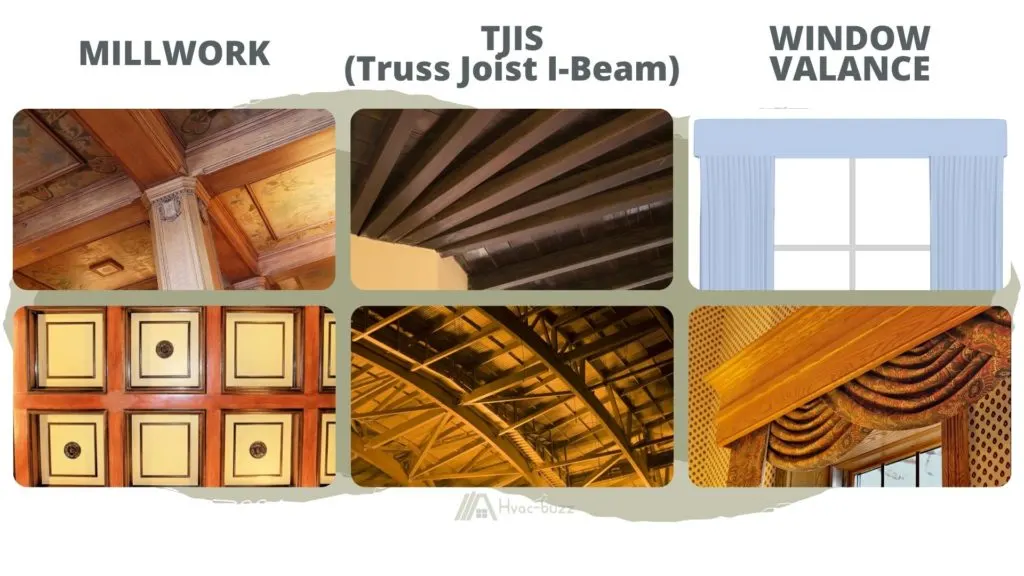
Are Bulkheads Necessary?
If you want to avoid bulkheads at any cost, then you obviously can. The cheapest way to do this is painting. You paint the ductwork so that it blends with the color of your room and become a part of the decor.
If you are the type who’s into DIY, then you can buy cost-effective, readymade covers that are easily available in the markets. They have simple installation requirements and can be used to conceal pipes and wires instead of a bulkhead.
While planning your home, instead of bulkheads, you can plan to create a framed-in vertical-cavity, also known as an HVAC chase. As the name suggests, this cavity can store all the plumbing, electrical and other components.
You will have plenty of alternatives for bulkheads—millwork, TJIS or truss joist I-beams, window shades, etc. But what makes bulkheads an ideal choice is that it is the perfect combination of cost-effectiveness and quality.
How to Remove a Bulkhead
Call a professional to remove the bulkhead. This is something you must not attempt on your own. If not done properly, you can end up causing costly structural damage. So, the first step is to hire a professional for removing the bulkhead.
Before removing a bulkhead, please find out what is it concealing. Sometimes, bulkheads have some critical plumbing or electrical item installed within them, which gets affected when a bulkhead is eliminated.
Removing a bulkhead has an impact on the nearby walls and ceilings, so it is important to carefully plan the process with certified professionals. You must also factor in the cost of repairing and repainting the surrounding area, which will require some work after you remove the bulkhead.
When the bulkhead is removed, the wires, pipes, ductwork, etc., are re-routed, and then the bulkhead is covered by cabinets or crown molding.
Alternative Definition in a Home: Basement Entrance
For most people, a bulkhead means the boxy structure that hangs from the ceiling and is used to house plumbing and electrical elements. But, the basement entrance, which opens to the basement from outside the house is also known as a bulkhead.
Made of concrete, stone, treated wood, or even steel, a basement bulkhead is a door that’s inconspicuous and is located outside the house. It’s not like your normal door. A basement bulkhead door is a little elevated from the ground and opens to a stairway that takes you down the basement.
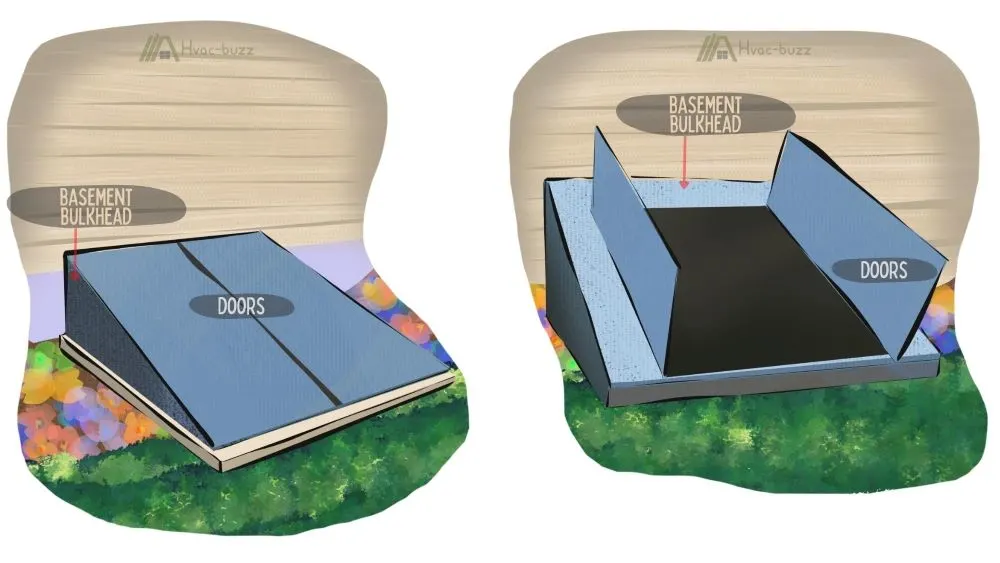
For protection against trespassers, the basement bulkhead is shielded by a metal structure that includes a single or double door. It’s better to keep this door locked. Also, this metal structure ensures no water enters the basement and causes flooding.
A basement bulkhead is also commonly known as a cellar door, although there is a difference between a basement and a cellar. It is installed mainly for safety and convenience. In some places, building codes make an outdoor entrance to the basement mandatory for rescue opening during emergencies.
A bulkhead door is located at the top of the external stairs and in some houses, there’s another door installed at the bottom of the stairs for better protection. This door at the bottom of the stairs ensures that the basement remains warm and comfortable. Installing this door is highly recommended.
Take a Detour
Basement Door Open or Closed During Summer
Should Basement Door Be Open or Closed During Winter
Should Basement Doors Swing in or Out (building code explained)
Just like any part of your home, you should regularly maintain and service your basement bulkhead door. Make sure to replace it when you notice signs of damage. Depending on the material, your bulkhead door can rot, warp, or corrode. If it’s not replaced on time then there might be water damage to the foundation underneath.
Sources
https://www.concretenetwork.com/concrete-joints/construction-joints.html
https://www.newenglandfoundationcrackrepair.com/post/why-crack-and-bulkhead-repair-is-more-important-than-you-think
https://www.thisoldhouse.com/basements/21097116/all-about-bulkhead-doors-and-when-to-replace-them
https://www.cellardoors.com/basement-egress/egress-safety-code-compliance/index.html
http://www.thompsonremodeling.com/blog/faq-what-is-the-purpose-of-a-bulkhead
https://homeguides.sfgate.com/removing-bathroom-bulkhead-63620.html
https://upgradedhome.com/what-is-a-bulkhead-basement/#:~:text=Basement%20Bulkhead%20Cons,-Basement%20bulkheads%20come&text=If%20built%20too%20tightly%2C%20they,through%20and%20cause%20water%20damage.
